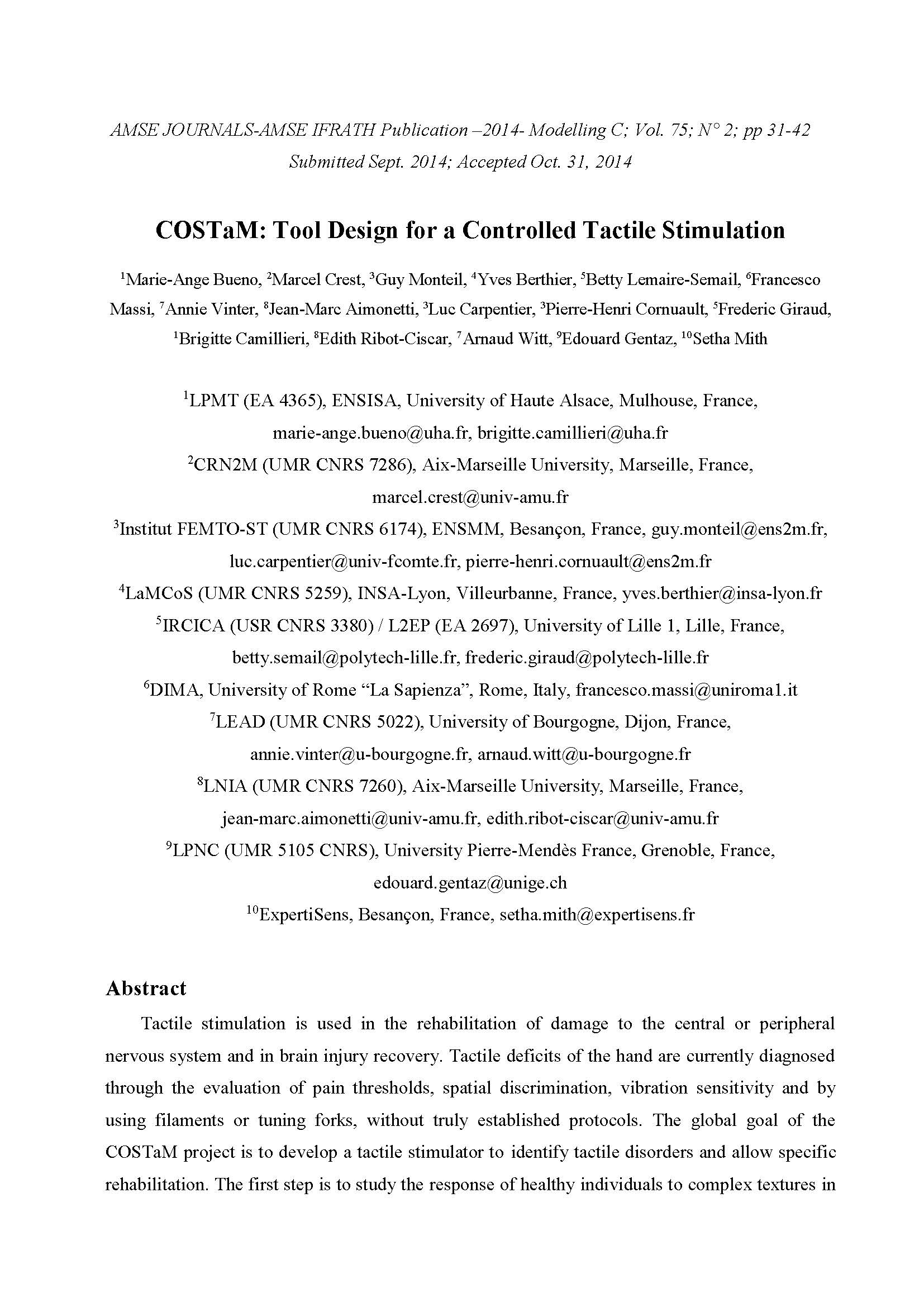Tactile stimulation is used in the rehabilitation of damage to the central or peripheral nervous system and in brain injury recovery. Tactile deficits of the hand are currently diagnosed through the evaluation of pain thresholds, spatial discrimination, vibration sensitivity and by using filaments or tuning forks, without truly established protocols. The global goal of the COSTaM project is to develop a tactile stimulator to identify tactile disorders and allow specific rehabilitation. The first step is to study the response of healthy individuals to complex textures in different ways: perceptive discrimination, study of friction and vibration between textures and the finger and the response of each kind of cutaneous mechanoreceptor. Three kinds of real textures have been chosen: relief, braking and fibrous. The use of a tactile stimulator, based on the modulation of the coefficient of friction with the finger, has been validated for the simulation of the braking descriptor.
COSTaM: Tool design for a controlled tactile stimulation
